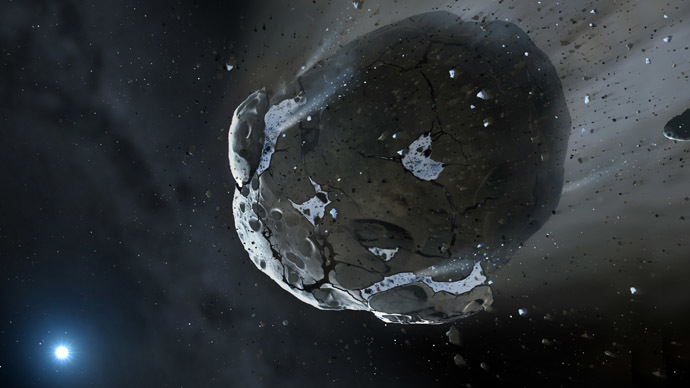Potentially dangerous asteroid to fly by Earth on January 26

A potentially hazardous asteroid, at least 20 times the size of the Chelyabinsk meteorite, will approach the Earth on January 26. The rock is expected to fly by at a distance of 1.2 million kilometers.
The asteroid, named 2004 BL86 by scientists, is estimated to be between 440-1,000 meters in diameter. 1.2 million kilometers is approximately three times the distance from the Earth to the Moon.
According to astronomers, there is no threat of the object colliding with our planet. The Goldstone Observatory, located in California's Mojave Desert, will observe the asteroid during its approach.
READ MORE: Erasing memories and landing on a comet: How science rocked in 2014
2004 BL86 was discovered on January 30, 2004, by the Lincoln Near-Earth Asteroid Research (LINEAR), responsible for the majority of asteroid discoveries from 1998 until 2005, when it was overtaken by the Catalina Sky Survey (CSS). As of mid-September 2011, LINEAR had detected some 231,082 new objects, of which at least 2,423 were near-Earth asteroids and 279 comets.
A space object is considered potentially dangerous if it crosses the Earth's orbit at a distance of less than 0.05 AU (approximately 19.5 distances from the Earth to the Moon), and if its diameter exceeds 100-150 meters. Objects of this size are large enough to cause unprecedented destruction, or generate a mammoth tsunami in case they fall into the ocean.
When a meteorite burst above the city of Chelyabinsk in February 2013, the impact was estimated to be equivalent to 440-500 kilotons of TNT. But the Chelyabinsk meteorite was relatively small, about 17 meters in diameter. It disintegrated with a blast at an altitude of over 20 kilometers.












